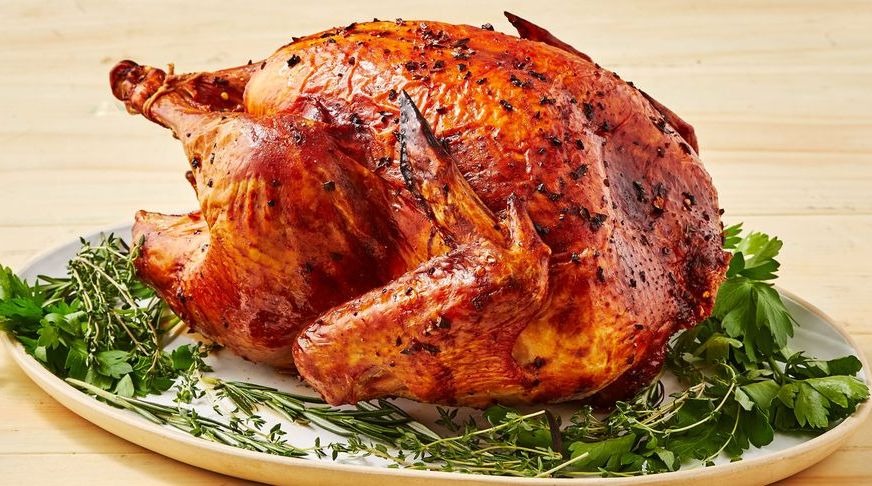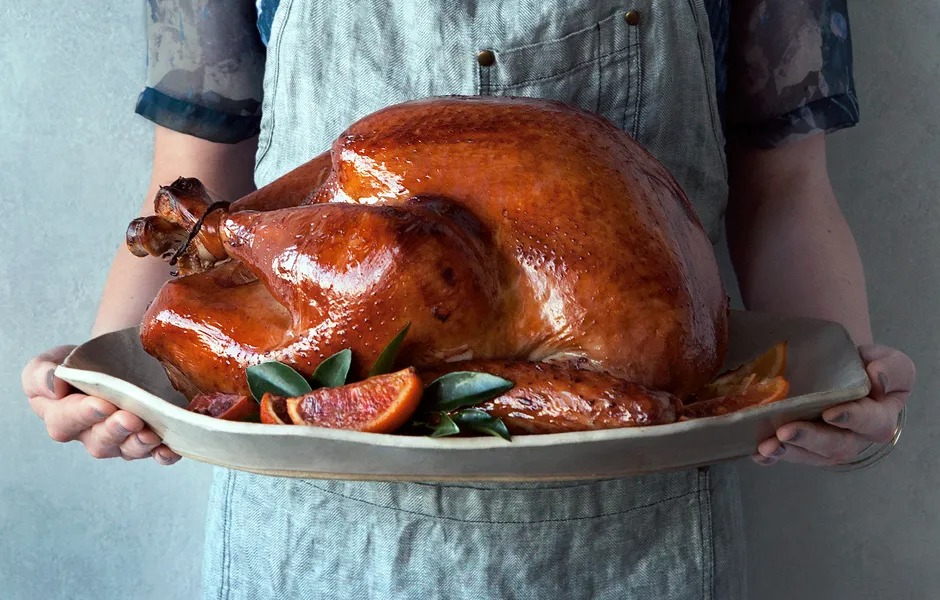Do you want the perfectly moist, spicy and juicy Thanksgiving turkey? Try The Dry Brine! All you do is rub the turkey with salt and leave it in the refrigerator for 24-72 hours. No duty, no fuss. The best turkey you will eat will soon be yours!
Thanksgiving is almost here, and it means that Americans will put on their aprons, sharpen their knives and reheat their ovens to fry the bird of all birds — turkey.
According to the National Turkey Federation, turkeys are harvested each year to deliver our Thanksgiving dinner heart. However, turkey is not the easiest protein to roast for a holiday and has an unfortunate reputation for drying in the oven.
When it comes to turkey, what you do before he sees the inside of an oven determines whether your guests want it. Follow this handy Dandy guide to drying your turkey to get the crispest skin and juiciest meat. Your guests will definitely ask for seconds!
Wet brine vs dry brine
Two of the most common methods of obtaining a juicy bird are preparation with a dry or wet brine, the latter is often called brine.
Dry salting, also called salting, simply means rubbing the turkey with salt, leaving it in the refrigerator for 24-72 hours, and then frying it. Salt changes the protein structure of meat, thereby releasing moisture. Then the bird picks up its own salty liquid, which gives juicy, tender and tasty meat.
Wet brine means heating a solution of salted water on the stove, cooling it, and then immersing the bird in brine for 24 hours or more before frying in the oven. It’s a big container and a lot of water when you’re talking turkey! Instead of simply taking back its own liquid, it also absorbs additional liquid from the saline solution.
Dry brine for victory!

Both techniques prevent the meat from drying out, and both are a good choice, but I’m partially dry for a few reasons to salt a large bird:
- It takes up less space in my fridge and I don’t have to worry about water or turkey juice.
- I can let the turkey air dry in the refrigerator while it dries the brines. This gives my bird that beautiful crispy golden skin. (I’ve written all about this technique here.)
- Handling a wet turkey is not fun, it’s not easy and I don’t want to do it.
How much salt do you need to dry a turkey?
Some dry brine recipes require salting the bird with 1 teaspoon of salt per pound, letting the turkey brine dry, and then rinsing the salt before frying. I don’t, And here’s why.
Rinsing poultry can easily transfer bacteria to other areas of your busy holiday kitchen. Food virus is not what guests need to remember at dinner at my house. With less salt eliminates the need to rinse the bird, but still provides a juicy bird.
I find that using 3 tablespoons of kosher salt for a 12- to 15-pound turkey is enough to ensure juicy, well-seasoned meat.
Use kosher salt
Always use kosher salt-never table salt. Kosher salt granules are bigger and easier to dispense, and table salt has a harsh aftertaste that could be picked up in this recipe.
The size of the salt granule varies depending on the brand, which means that the amount of salt per tablespoon also varies. I used kosher salt from Morton. If you are using diamond crystal salt, you need to add 1 1/2 teaspoons of salt to this recipe.
Season and salt in one step

I mix the salt with herbs, a little lemon juice and olive oil to form a paste. Lemon balances the salt, herbs strengthen the taste, and olive oil helps to make the skin crispy and season the meat.
- Seasoning and salting the bird at once saves me a step. I’m all about saving steps on Thanksgiving.
- The aromas of additional ingredients are mixed with salty juices and absorbed into the meat for a day or more in the refrigerator.
- Just before I’m ready to fry the turkey, I fill the cavity with a few fresh herbs, one or two quartered lemons and one onion, tie it and put it in the oven. No rinsing needed.
How long to dry Turkey brine
I usually dry the brine for 48 hours for a lush bird. However, you can salt your turkey for up to 72 hours (and some of our testers preferred it!). The skin will look dry and dry after all the time spent in the refrigerator, but do not worry, it will cook beautifully.
Also, if you have little time, because sometimes it’s just how the holidays go, every little will help. Dry salting is worth it, even if you have only half a day. Just make sure that the bird is not frozen at first, otherwise it will not absorb the aromas.
What kind of turkey is best suited for dry brine?

The dry salt solution works best on natural or air-cooled turkeys without adding saline.
Many mass-produced Supermarket turkeys are injected with saline and are best avoided if you intend to dry your turkey. Usually you will find this information on the label. I have seen as low as 4 percent and as high as 8 percent solution, and the dry salt above could make the bird too salty.
However, if you have already bought your turkey and find that it has received a saline injection, you can simply halve the salt in this recipe.
Defrost Your Turkey on
Thaw your turkey in the refrigerator, not on the counter, and leave the turkey in its package. The general rule is that it takes 24 hours for each 4-pound bird.
If you need to defrost your turkey quickly, fill your sink with cold water and place the turkey with the side of the breast down. Make sure that the turkey is completely immersed in water in its original packaging and change it every 30 minutes. Allow about 30 to 40 minutes of defrosting time per pound of bird. Scrub your sink and all surrounding surfaces. (See the previous paragraph on wet birds).
Important tips for frying a dry turkey
- Place your oven rack in the bottom third of the oven.
- Start at 425°F, place the turkey with the breast side up, cover the breast with foil and reduce the heat.
- Ovens are often cold. I like to turn my bird halfway and staple it for even baking and tanning. Keep some turkey or chicken stock handy if your bird is not producing enough juice from the start, and use it for stapling if necessary.
- Get the turkey out of the oven when an instant-read thermometer inserted into the thickest part of a thigh without touching the bone records 160°F.

